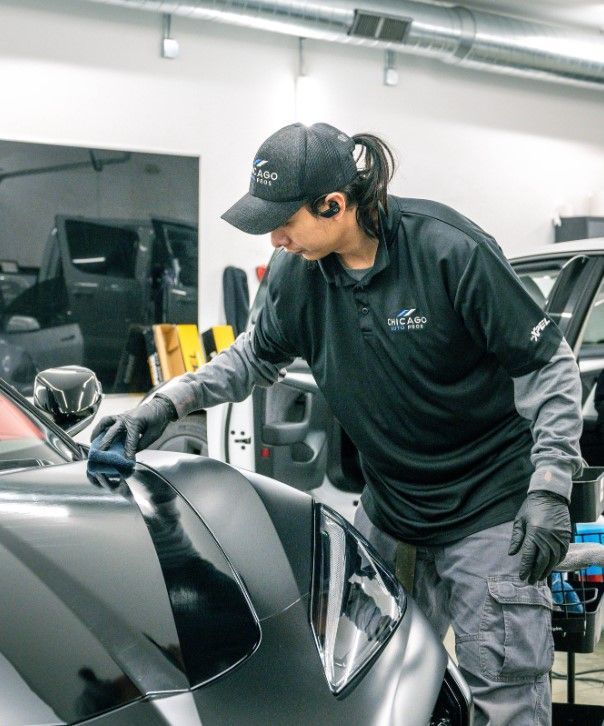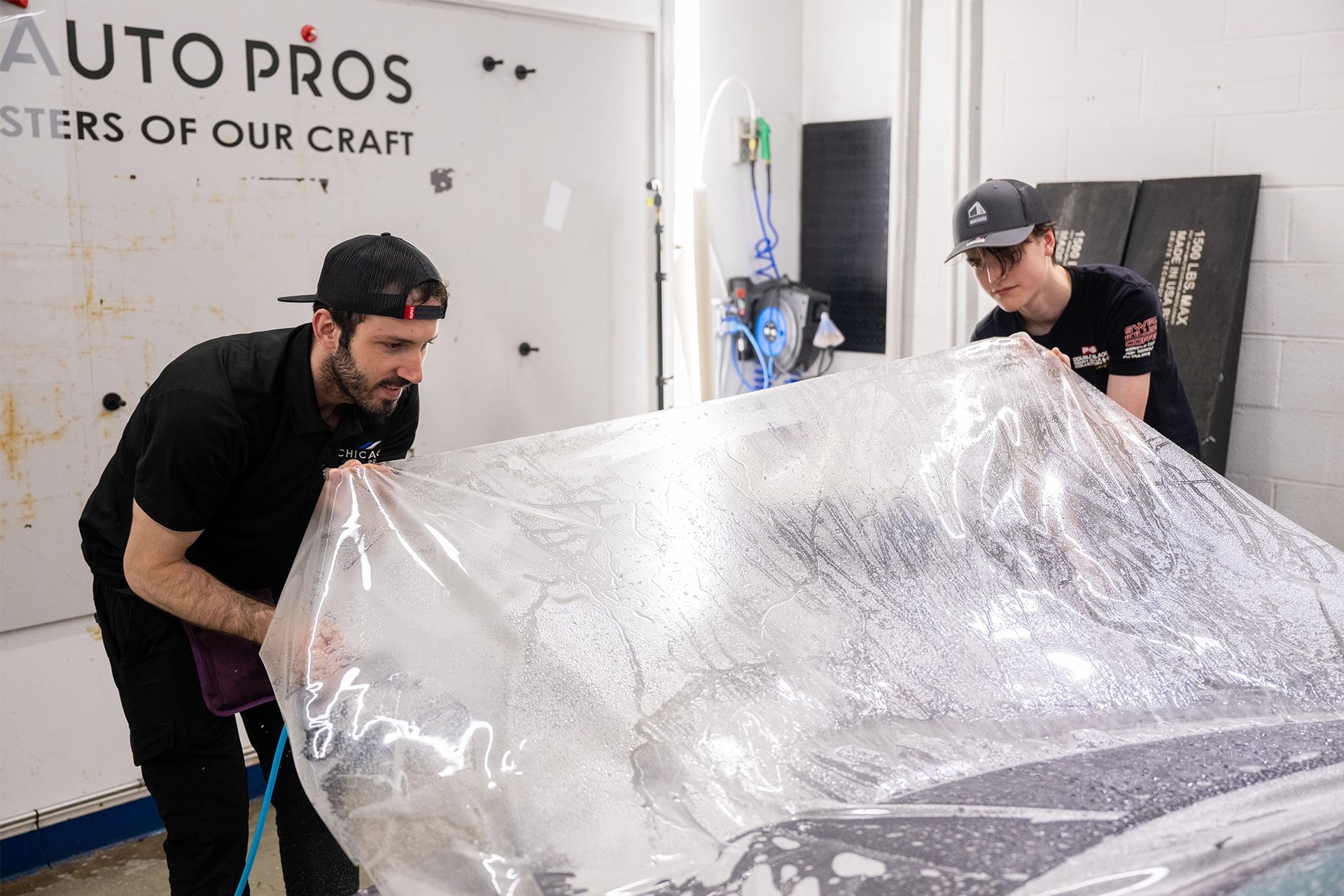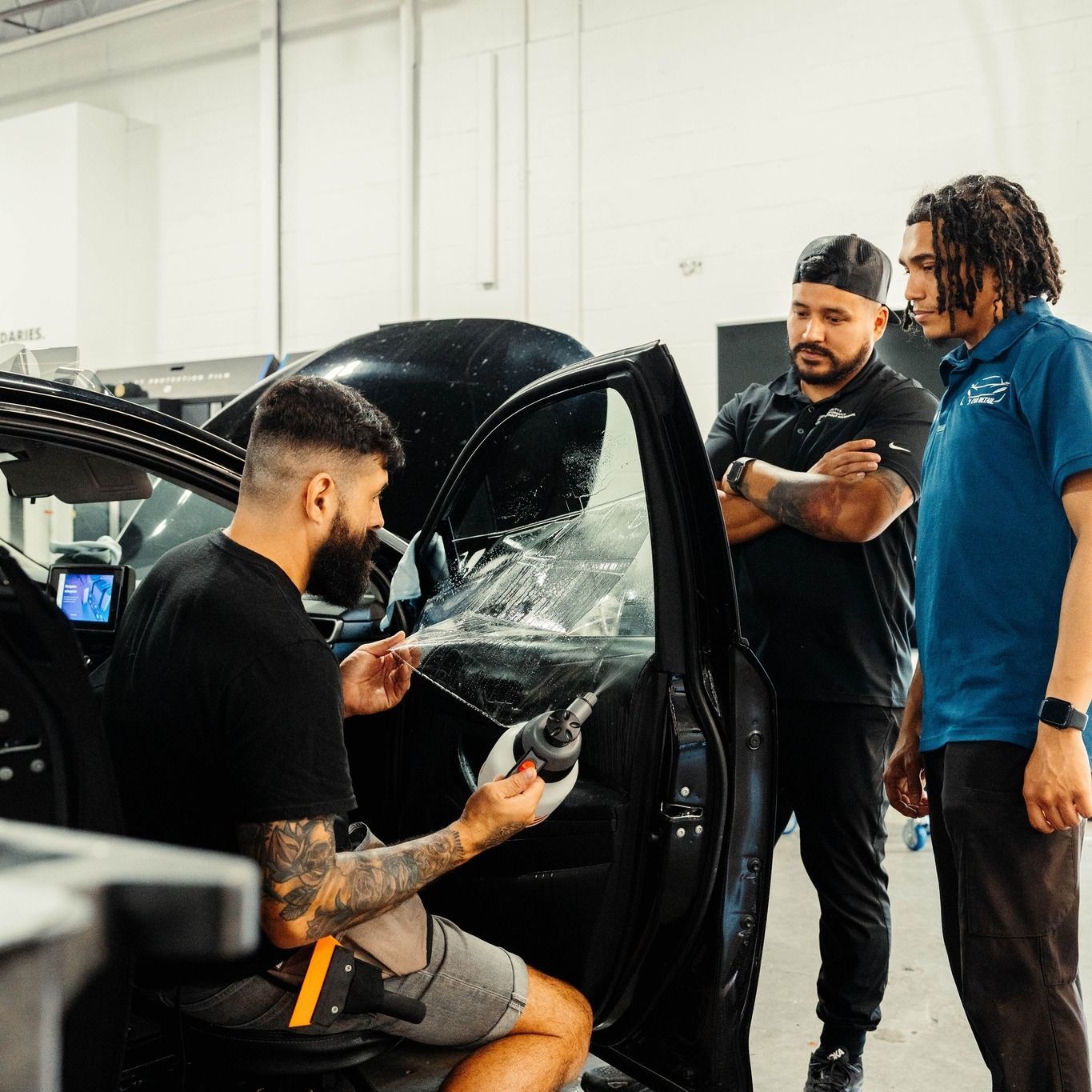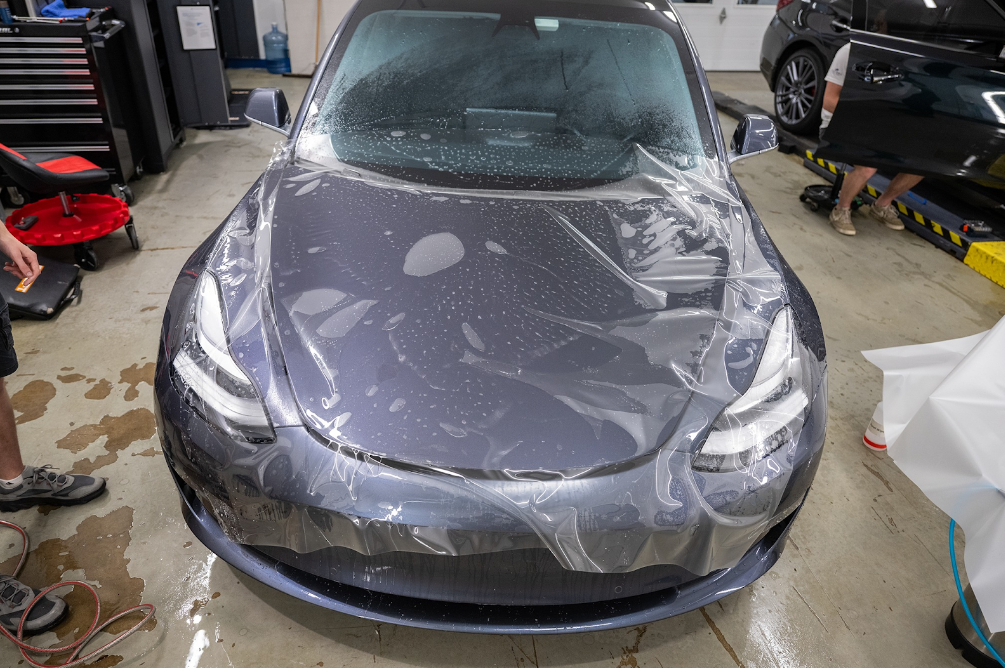The Ultimate Guide to Paint Protection Film: What It Is and How It Works
In the dynamic world of automotive care, the quest to preserve the pristine appearance of your vehicle has led to the rise of innovative solutions. Among these, Paint Protection Film (PPF) stands out as a game-changer, offering an unparalleled shield against the daily hazards your car faces. In this comprehensive guide, we delve into what PPF is, how it works, and the myriad benefits it brings to safeguarding your automotive investment.
What is Paint Protection Film (PPF)?
Imagine a clear, invisible shield enveloping your car's surface, bravely taking on the scrapes and nicks that would otherwise ruin its flawless finish. Well, that's the essence of paint protection film (PPF). This state-of-the-art material acts as armor for your vehicle, safeguarding it against various types of damage. PPF functions like a silent guardian, steadfastly protecting your car’s paintwork from scratches and impacts.
At its core, PPF is a transparent, thermoplastic urethane material. In simpler terms, it's a see-through layer that gets applied to the exterior painted surfaces of your vehicle. Once installed, it becomes a protective barrier against stone chips, insect splatters, minor abrasions, and other forms of damage. It serves as the sacrificial lamb, absorbing all the punishment so your car's actual paint doesn't have to.
In terms of application, PPF is commonly used on high-impact areas like the hood, fenders, bumpers, and side mirrors—places where chipping, scratching, and general wear and tear are most likely to occur. Owners of luxury cars, sports cars, and even vintage cars embrace this protective film as a crucial safeguard to preserve their vehicle's pristine appearance and increase resale value. That's the basic overview of what PPF does and how it does it. But to truly understand its significance, we need to explore its working principles and unpack how this miracle material preserves the beauty and longevity of your vehicle’s finish.
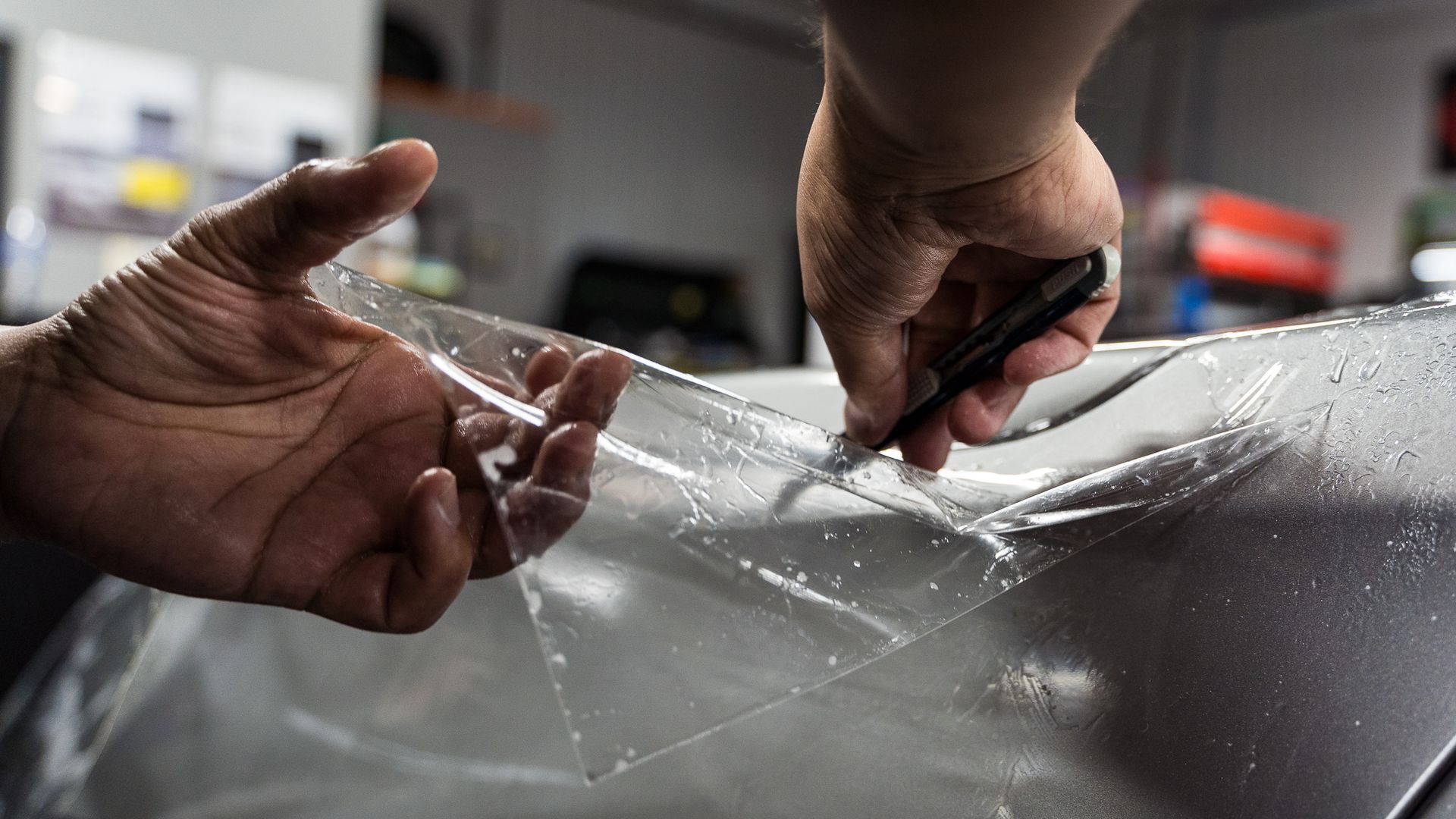
Advantages of Using PPF
So, what makes paint protection film (PPF) such a game-changer for your vehicle? Let's dive into the standout benefits that come with using this innovative protective layer. Whether you're concerned about maintaining your car's appearance, keeping it safe from environmental hazards, or preserving its resale value, PPF offers a multifaceted range of advantages that cater to these concerns and more.
Impact Protection
Imagine driving down the road without a care in the world about stray stones or debris causing unsightly chips and scratches on your car's paint. That's precisely what PPF does for you. It acts as an invisible shield, guarding your vehicle's exterior from the daily onslaught of road hazards. By taking the hit instead of your car's paint, PPF maintains the pristine appearance of your vehicle, ensuring that it always looks as sleek and polished as the day you brought it home from the dealership.
Resistance to Corrosion and Contaminants
The road is rife with unseen threats to your car's exterior. From acidic contaminants to mineral deposits, these environmental elements can wreak havoc on your vehicle's paint job. Fortunately, PPF provides a robust defense against these harmful intruders. With its exceptional resistance to corrosion and contaminants, the film acts as a barrier, preventing staining and etching while keeping your car looking fresh and new.
Preservation of Resale Value
We all know how important appearances can be when trying to sell something, especially when it comes to vehicles. PPF ensures that your car maintains its showroom-worthy appeal, safeguarding its resale value. By protecting the paint from damage and wear, the film plays a pivotal role in preserving your vehicle's aesthetic allure. This means potential buyers will be greeted with a well-maintained, polished exterior, increasing the likelihood of obtaining top dollar for your prized asset.
In essence, by investing in PPF, you're not just enhancing the visual appeal of your vehicle; you're also fortifying its longevity and market value. It's like giving your car a suit of armor against the elements—a safeguard that pays dividends in safeguarding both appearance and resale worth.
PPF Application: A Step-by-Step Guide
Applying PPF is like giving your vehicle a protective shield against the elements. However, to do it right, you need to follow a series of careful steps, starting with:
Step I: Surface Preparation
Before anything else, your vehicle's exterior should be sparkling clean. Any dirt, old wax, or residues will interfere with the adhesion of the PPF. Use a mild detergent and water solution to give your car's surface a good scrubbing. This thorough cleaning ensures that the film adheres smoothly and lasts longer without any issues.
Step II: Film Placement and Trimming
Once the exterior is spotless, it's time to apply the film to the designated areas of your vehicle. It's essential to handle this part carefully, especially since each vehicle has unique contours and shapes. You'll need to shape and cut the film precisely to fit these curves and angles.
Step III: Squeegee and Secure
The goal here is simple: a smooth, bubble-free finish. Now comes the satisfying part—squeegeeing! Using a squeegee helps remove any air bubbles that might have gotten trapped during application. You start from the center and work your way outward. As you squeeze, you're ensuring that the film is securely adhered to the car's surface. Following these steps diligently guarantees that your PPF serves its purpose effectively, providing an extra layer of defense against everyday wear and tear.
By carefully applying PPF with these steps in mind, you're essentially setting up your vehicle for long-term protection against various environmental aggressors while maintaining its aesthetic appeal.
Lifespan of Paint Protection Film
Paint protection film (PPF) is an investment in protecting your vehicle's exterior, so knowing how long it can last is crucial. The lifespan of PPF can vary depending on several factors. The quality of the film itself plays a major role in determining how long it will last.
Factors such as the climate and driving conditions can also affect the longevity of PPF. For instance, if you frequently drive in areas with harsh weather conditions, such as extreme heat or cold, the film may experience more wear and tear. Similarly, if you often drive on gravel roads or in areas with a lot of debris, the film may be subjected to more abrasion, reducing its lifespan.
Furthermore, regular maintenance is essential for prolonging the lifespan of the paint protection film. Gentle washing helps remove dirt, grime, and other contaminants that can degrade the film over time. By keeping the film clean, you're preventing these particles from causing damage, which can significantly extend its lifespan.
Understanding the lifespan of paint protection film and the factors that influence it allows you to make informed decisions about caring for your vehicle's exterior. By investing in high-quality PPF, being mindful of environmental conditions, and practicing regular maintenance, you can maximize the longevity of this valuable protective layer.
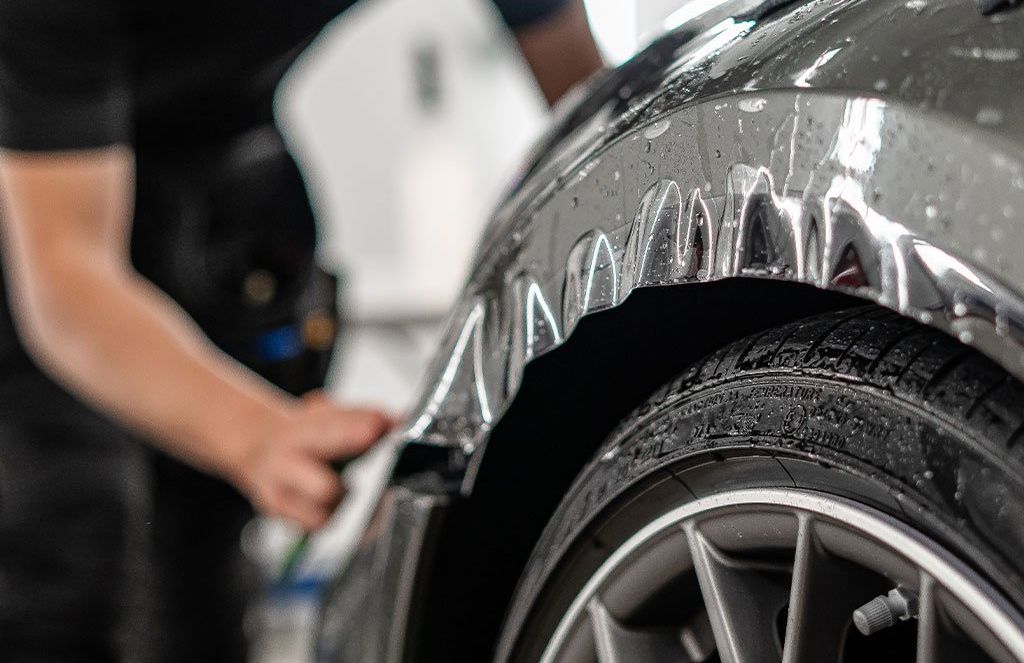
Determining the Cost of PPF Installation
When considering the cost of PPF installation, several factors significantly influence the total expense.
- Size of the Vehicle: Larger vehicles require more material for complete coverage, leading to a higher cost. Conversely, smaller vehicles tend to be less expensive to protect with PPF due to requiring fewer materials.
- Extent of Coverage: The coverage choice for your vehicle notably impacts the overall cost. A full vehicle package will naturally cost more than a partial front or track package.
- Quality of the Film: Different brands and quality levels of paint protection film come with varying price points. While higher-quality films are pricier, they offer enhanced durability and protection.
Luxury and sports cars also typically incur higher costs due to their complex body shapes and the use of higher-quality materials. The unique contours and lines require additional skill and attention during the installation process.
Factors such as overhead costs at the shop, including a controlled environment and high-end equipment, may also contribute to variations in pricing. A well-equipped facility can lead to a higher upfront investment for the installer, which may reflect slightly higher installation costs.
Customization is possible based on individual needs and budgets. This means that specific details can be discussed with a local installer, who can help customize a package suited to preferences and financial constraints.
It's worth noting that while some vehicle owners opt for a comprehensive PPF package covering all exterior painted surfaces, others may choose individual panels or areas for protection. This flexibility allows for tailored solutions based on specific needs and budgetary considerations.
In addition to the initial installation cost, it's crucial to take into account the potential longevity and benefits offered by the selected PPF package. Investing in a high-quality application can provide long-term value by safeguarding the vehicle's paintwork from environmental elements and everyday wear and tear.
Understanding these key determinants of PPF installation costs provides valuable insight when considering this protective enhancement for your vehicle. By carefully evaluating these factors, you can make an informed decision that aligns with your budget and requirements.
With a keen understanding of what goes into determining the cost of PPF installation, it's time to turn our attention to assessing how suitable PPF is for different car models.
Suitability of PPF Across Different Car Models
When applying paint protection film (PPF) to cars, one common question that arises is whether it's suitable for all types of vehicles. The good news is that PPF is versatile and can be applied to a wide range of car models, from everyday sedans and SUVs to high-end luxury and performance vehicles. This means that regardless of the type of car you own, there's a PPF solution available to cater to your specific needs—whether it's impact protection, preservation of appearance, or maintaining resale value.
For owners of everyday sedans and SUVs concerned about wear and tear, PPF provides an excellent solution for safeguarding the paint against road debris, scratches, and other minor damages. By applying a protective layer, they can maintain the pristine appearance of their vehicles for longer, ensuring an attractive exterior even after years of use.
On the other hand, for owners of luxury and performance vehicles, PPF serves as an essential investment to preserve the original factory finish and protect their significant financial outlay. These vehicle owners are often meticulous about maintaining the flawless exterior of their cars, making PPF a valuable asset in shielding their prized possessions from both environmental and human-induced harm.
When you invest in a prestigious vehicle, you want to ensure that it retains its allure and value. Therefore, applying PPF is a prudent strategy to safeguard your investment by preserving its appearance and protecting its paintwork. Moreover, having PPF installed can offer peace of mind when navigating rough roads or parking in crowded areas, as it acts as comprehensive armor against various forms of damage.
Some might argue that owning an everyday sedan may not necessitate such meticulous protection. However, even practical car owners can gain from the resilience that PPF offers when taking into account things like resale value and personal satisfaction from driving a well-maintained vehicle. It's not just about maintaining appearances; it's also about ensuring long-term durability and retaining value.
In conclusion, whether you drive a sedan for daily commutes or own a high-performance vehicle for exhilarating rides, the versatility of PPF allows every car owner to benefit from its protective qualities while preserving the integrity and aesthetics of their vehicles.
Whether you drive an everyday sedan or a high-performance vehicle, PPF offers a versatile solution to protect your car's exterior while adding long-term value. It's a smart investment for any car owner looking to maintain the pristine condition of their vehicle.
Elevate Your Vehicle's Protection with Chicago Auto Pros' Paint Protection Film Expertise
At Chicago Auto Pros, we believe in using only the best materials for our PPF installations. We partner with leading manufacturers to source high-quality films that offer unparalleled durability and protection. With our premium-grade materials, you can trust that your vehicle will be shielded from the elements for years to come. We stay ahead of the curve with state-of-the-art technology and techniques. From precision-cutting machines to advanced application methods, we utilize the latest innovations to ensure flawless results with every installation. Book now!
We Make Your Car Look Beautiful
Founded with an unquenchable desire for automotive perfection, Chicago Auto Pros is a leader in paint protection efforts and aesthetic vehicle detailing services in Chicago, Illinois. When you bring your automobile to our Chicago-based detailing shop, you are sure to experience unmatched integrity, customer service excellence, and above all, absolute automotive perfection from the inside out. Choose the right auto detailing team - choose Chicago Auto Pros!
Lombard Location
207a Eisenhower Ln S, Lombard, IL, United States
Glenview Location
2075 Johns Ct, Glenview, IL, 60025, United States
Additional Service Areas
Tesla & EV Detail Specialists
Services Offered
Quick Links
Proudly written and crafted by the team at Detailers Roadmap,a platform developed for detailing operations across the globe.
All Rights Reserved | 8bitcreative LLC | Chicago Auto Pros



